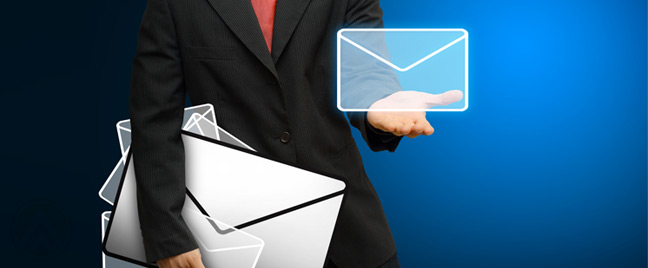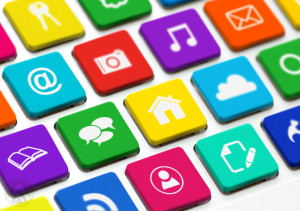Email customer support is one of the tried and tested channels that your brand should optimize. Here’s how you can do it.
As customers increasingly turn to digital channels for interactions, email customer support becomes a vital component of your customer service strategies. In fact, email has stood the test of time when it comes to preferred customer service channels.
On that note, let’s explore 13 best practices that will elevate your email customer support game to new heights. Through these best practices, you forge lasting customer relationships and solidify your position as a customer-centric brand.
But first, let’s take a look at why email remains an effective tool for customer service.
Benefits of Email Customer Support
Do you still wonder if email is still relevant as an effective channel of customer service? The good news is it still is. Despite the rise of social media, chatbots, and instant messaging apps, email remains a powerful tool for customer support. Here’s why:
-
Widespread Adoption and Accessibility
One of the primary reasons email remains effective is its widespread adoption and accessibility. Customers of all demographics and age groups are comfortable with email, making it inclusive. In addition, email is readily available to virtually everyone with internet access. This makes it better than other communication platforms which require customers to download specific apps.
-
Asynchronous Communication
Email offers the advantage of asynchronous communication. This means that customers can send their inquiries at any time, and support agents can respond when they are available. The resulting flexibility eliminates the pressure of immediate responses, allowing both customers and support teams to manage their time efficiently.
-
Detailed and Comprehensive Responses
Other communication channels such as social media or chatbots have character limitations. However, email enables support agents to provide detailed and comprehensive responses. Customers can also articulate their concerns, feedback, or issues in greater detail. As a result, support agents can gain a deeper understanding of the situation.
-
Documentation and History
Email provides a valuable documentation trail of customer interactions. Each email exchange creates a record that can be easily referenced for future needs. This documentation empowers support teams to track past issues, resolutions, and preferences.
-
Privacy and Security
Privacy and security concerns are highly important in the digital world. Email customer support, when used correctly, provides a secure and private communication channel. Customers can share sensitive information with confidence, knowing that email encryption safeguards their data during transmission.
-
Support for Multimedia
Email supports multimedia elements, allowing customers to attach files, images, or screenshots to illustrate their concerns better. This capability aids in issue resolution as support agents can visualize problems and offer more accurate guidance. Additionally, customers can receive instructional videos or step-by-step guides via email customer support.
-
Flexibility for Automation
Email customer support can be integrated with automation tools to streamline processes. For example, automated acknowledgment emails can be sent to customers, letting them know their inquiry has been received. Additionally, automated email campaigns can be used to follow up with customers after a support interaction.
-
Nurturing Customer Relationships
Email allows businesses to nurture customer relationships beyond immediate problem-solving. Through email marketing, for example, businesses can engage with customers, inform them about new products, and offer exclusive promotions. This ongoing communication strengthens customer loyalty and brand engagement.
With all that being said, let’s get to the customer support best practices for this channel.
1. Swift and Timely Responses
When it comes to email customer support, time is of the essence. Customers expect prompt responses to their queries, and delaying replies can lead to frustration and dissatisfaction. On that note, you should set clear response time targets, ideally within 24 hours or sooner.
Timely responses demonstrate your commitment to their satisfaction and urgency in addressing their concerns. To optimize efficiency, consider utilizing automated acknowledgment emails. These reassure customers their inquiries have been received and are being attended to promptly.
2. Personalization and Customer-Centric Approach
Customers seek to be treated as unique individuals rather than just another ticket number. In that case, embrace the power of personalization in your email customer support interactions.
Address customers by their names and reference specific details from past interactions to create a warm and customized email experience. Taking the time to personalize your responses shows customers that you value their business and are attentive to their needs.
3. Clarity and Simplicity in Communication
Effective communication is at the heart of successful email customer support. Therefore, you should avoid using technical jargon or complex language that may confuse or overwhelm customers. Instead, strive for clarity and simplicity in your responses so that your messages are easy to understand.
Use bullet points or numbered lists to break down complex explanations. This makes it easier for customers to digest the information. Remember, the goal is to provide solutions in a clear and straightforward manner.
4. Empathy and Understanding
Empathy is a powerful tool in email customer support. Understand that customers may reach out when they encounter challenges or frustrations.
Show genuine concern for their issues, acknowledging the impact on their experience. Let them know that you understand their feelings and are committed to resolving their problems swiftly. After all, demonstrating empathy in your email interactions humanizes your brand and builds trust with customers.
5. Providing Comprehensive Solutions
Customers turn to email support seeking resolutions to their inquiries. In that case, offering comprehensive solutions in your responses showcases your commitment to customer success. If possible, make sure that you address all of the customer’s issues in a single email. This avoids the need for multiple back-and-forth exchanges.
Also, provide actionable steps and solutions to resolve their issues promptly and efficiently. Proactively anticipate follow-up questions and address them in your initial response, demonstrating your attentiveness and expertise.
6. Thoroughness and Attention to Detail
Attention to detail is a mark of professionalism and dedication to providing excellent email customer support. One way to put this into practice is by double-checking your responses for accuracy and completeness before sending them.
You should also avoid hasty or incomplete answers that may lead to further confusion. Paying meticulous attention to the details in your responses reinforces your credibility as a reliable and trustworthy support resource.
7. Avoiding Cliches and Generic Responses
Personalized customer support isn’t just about using the customer’s name. It could also mean avoiding the pitfall of relying on generic templates or cliched responses. After all, each customer interaction is unique, and your responses should reflect that.
While creating personalized templates for efficiency is acceptable, they should still suit each customer’s specific situation and concerns. Authenticity and genuineness in your email customer support interactions lead to stronger connections with customers.
8. Effective Use of Knowledge Base and Resources
Your knowledge base is a treasure trove of information that can empower customers to find answers independently. You can share this resource to customers through links to relevant knowledge base articles or frequently asked questions (FAQs).
However, you should regularly update and maintain your knowledge base so that it remains a valuable resource. Through this practice, you not only save time but also encourage self-service, empowering customers to find solutions on their own.
9. Professional Email Signatures
A professional email signature adds a touch of credibility and polish to your email communications. This includes your name, designation, and contact information. With these elements present, customers will find it easy to reach out to you directly if needed.
You should also incorporate branding elements such as your company logo or tagline. This reinforces your brand identity and creates a cohesive brand experience.
10. Follow-Up and Timely Updates
Keeping customers informed of the progress on their issues is crucial for building trust in your email customer support.
If a resolution requires additional time, reassure customers by sending follow-up emails to address their concerns. Keep in mind that transparency and regular updates demonstrate your commitment to resolving their issues promptly and professionally.
11. Escalation Process for Complex Issues
Not all customer issues can be resolved in a single interaction. Sometimes, complex problems may require specialized attention or involvement from higher-level support.
When this occurs, define a clear escalation process that guides support agents on when and how to escalate challenging issues. Also, provide customers with a designated point of contact for escalated concerns, ensuring they receive personalized and attentive support.
12. Collecting Customer Feedback
Feedback is a valuable source of insights that can help you improve your email customer support process continuously. As such, you have to encourage customers to share their feedback on their support experience.
Create a system for collecting and analyzing customer feedback, paying attention to both positive and negative comments. Act on customer feedback promptly, making improvements to enhance your email support and overall customer experience.
13. Measuring Performance and Effectiveness
To gauge the success of your email customer support efforts, track key performance metrics. Monitor response times, customer satisfaction ratings, and feedback scores to gain insights into your team’s performance.
Analyze resolution rates to identify any bottlenecks or areas for improvement. Use data-driven insights to refine your customer support strategies and optimize your email customer support process.
Outsourcing for Better Email Customer Service
Aside from adopting the customer service tips mentioned above, outsourcing email customer service can offer numerous benefits to your business. Here are key advantages that illustrate how outsourcing this critical function can be advantageous:
-
Cost Savings
Outsourcing email customer support can lead to significant cost savings for your business. Instead of investing in an in-house support team, outsourcing allows you to leverage the expertise of specialized providers at a fraction of the cost. Additionally, outsourcing eliminates the need for maintaining expensive infrastructure and technology.
-
Access to Specialized Expertise
Outsourcing companies have dedicated teams of skilled professionals with in-depth knowledge and experience in handling customer inquiries. So, if you outsource, you gain access to this specialized expertise, ensuring that your customers receive high-quality and efficient support.
-
Scalability and Flexibility
During peak seasons or sudden increases in customer queries, an in-house team may struggle to handle the surge in volume. Outsourcing, on the other hand, offers the flexibility to scale customer service operations up or down based on demand.
-
Improved Response Time
Prompt responses are crucial in maintaining customer satisfaction. Good thing outsourcing companies are equipped with the resources and infrastructure to respond to customer emails swiftly. In addition, with dedicated support agents working round the clock, your customers can receive timely resolutions.
-
Multilingual Support
For businesses operating in global markets, outsourcing email customer service can provide multilingual support. In other words, outsourcing companies can offer support in multiple languages, enhancing accessibility and customer satisfaction on a global scale.
-
24/7 Support Availability
Customer support needs can arise at any time, including outside regular business hours. Fortunately, outsourcing allows you to offer 24/7 support availability without straining your in-house team. This round-the-clock assistance shows customers that their concerns are a priority, promoting customer retention and loyalty.
-
Focus on Core Competencies
In outsourcing email customer service, your business can redirect valuable resources and focus on core competencies. Consequently, your internal teams can concentrate on developing innovative products, improving services, and driving overall business growth.
-
Advanced Technology and Tools
Outsourcing companies often utilize cutting-edge technology and tools to streamline customer support processes. From ticketing systems to email automation, these tools enhance efficiency, leading to faster response times and improved customer interactions.
-
Customer Insights and Analytics
Outsourcing partners are well-versed in gathering and analyzing customer data. Basically, by outsourcing email customer service, you gain access to valuable insights into customer behavior, preferences, and pain points. These insights can inform your business strategies and help you improve products and services to better meet customer needs.
-
Continuous Improvement
Outsourcing companies are committed to providing exceptional customer service. In particular, they proactively seek feedback, analyze performance metrics, and implement improvements to optimize the support process continually. As a result, your business remains at the forefront of delivering excellent customer experiences.
Conclusion
Through these 13 best practices for successful email customer support, you can create exceptional customer experiences. The power of personalization, prompt responses, and comprehensive solutions will surely win the hearts of your valued customers.
Keep in mind that email customer support is not just about addressing inquiries. It’s also an opportunity to build meaningful connections and leave a lasting positive impression on your customers. Harness the full potential of email customer support and elevate your brand’s reputation as a customer-centric trailblazer in your industry.
Outsourcing your email customer service can also benefit your brand in many ways. Open Access BPO should be your top choice for this move, as our services are available in more than 30 languages. Personalization has never been easier with Open Access BPO, so take this opportunity to understand your customers better. Contact us today!
Using some of the best practices that Open Access BPO applies to its non-voice customer support unit, any business can explore the full potential of email as a customer service channel.
Most outsourcing firms that offer call center services in the Philippines have email support in place to cover the multi-channel aspect of customer service and provide assistance through the channel their customers prefer. However, having email as a point of contact between consumers and brands is not enough to guarantee a successful multi-channeled customer service delivery. Like any other channel, this tool must be used wisely for it to be efficient.
Here are best practices that you can use to make the most of your email support services:
1. Respond right away
Although email is preferred by customers who want detailed answers that they can save and use for future reference, email support has a drawback that you should address. Unlike calls and live chat, email interactions are not real-time.
In spite of this, delays shouldn’t hinder you from delivering immediate assistance. Set up an auto-responder that acknowledges receipt and estimates the time the senders could get an email from a real representative. Chances are, customers are more willing to accept the slight delay as long as you let them know that their request is being processed.
2. Constantly monitor
Along with a tool that estimates the response time, have a program that can notify agents if the requests are processed within the promised duration. This should also be able to track ticket assignments, queues, and the agents’ adherence to customer-handling practices.
3. Route through webforms
The estimated response time depends on the inquiry type or level, so before customers send the email, they should categorize their request for it to be sent to the right agent. You could use webforms as a routing instrument; this requires the customers to fill the form with necessary details and select the category of their problem or question.
4. Anticipate inquiries and needs
A good email support program has a management system that tracks and reports trends in customer needs. This could tell you recurring problems so that you can work on preventing them or give proven solutions to customers who might encounter the same issues in the future. The trends could also reveal what customers prefer or purchase the most, allowing you to upsell or cross-sell related products (with the recipients’ permission, of course).
5. Integrate email with other channels
There should be a unified database for your phone, chat, social media, and email agents. With this, representatives could refer to past transactions of a sender to process his current request. This also makes for easy communication and escalation between email representatives and their team leaders.
Integration should also be made for the customers’ ease of use. Give them the option to cut and continue transactions between channels. For example, they can call a representative for assistance and ask the instructions to be sent via email instead of dictated over the phone.
If implemented and managed wisely, email support could reduce costs, increase customer satisfaction, and boost your contact center’s productivity. Referring to these best practices can help you multi-channel your customer service effectively.




